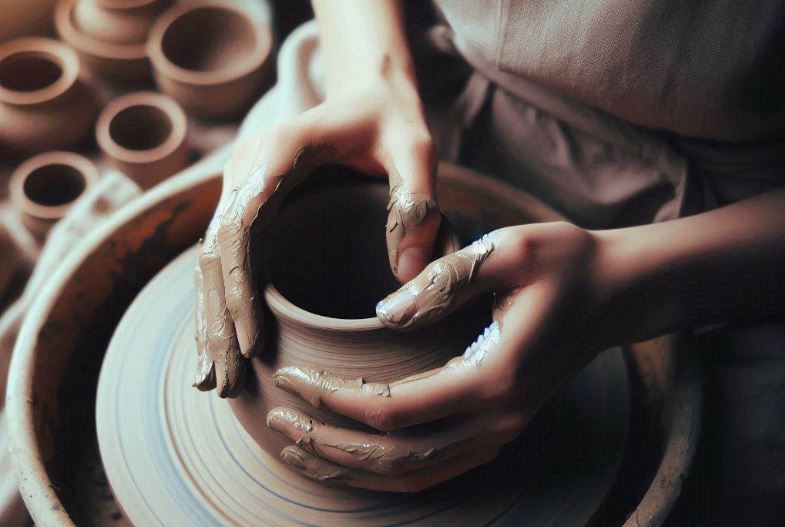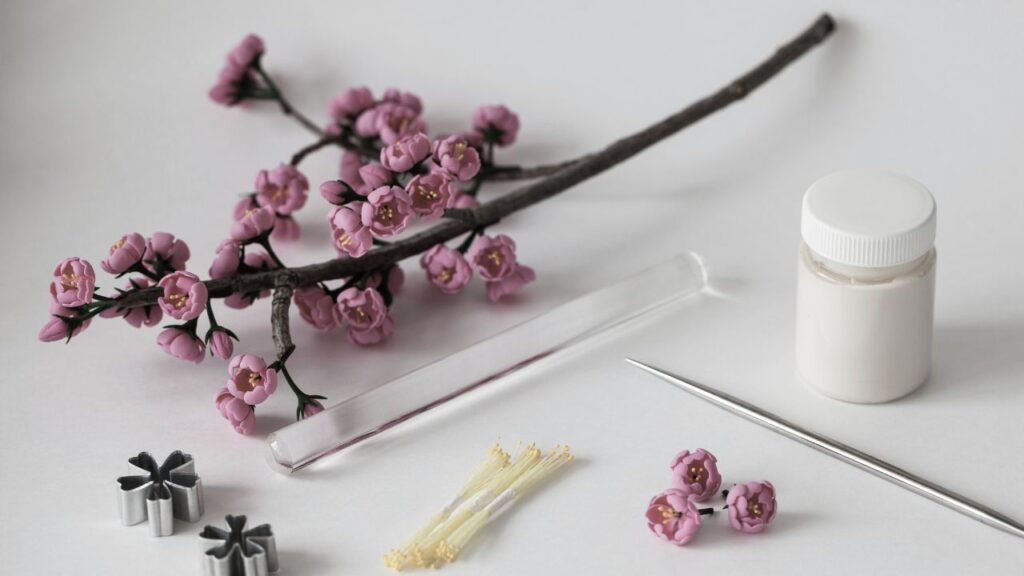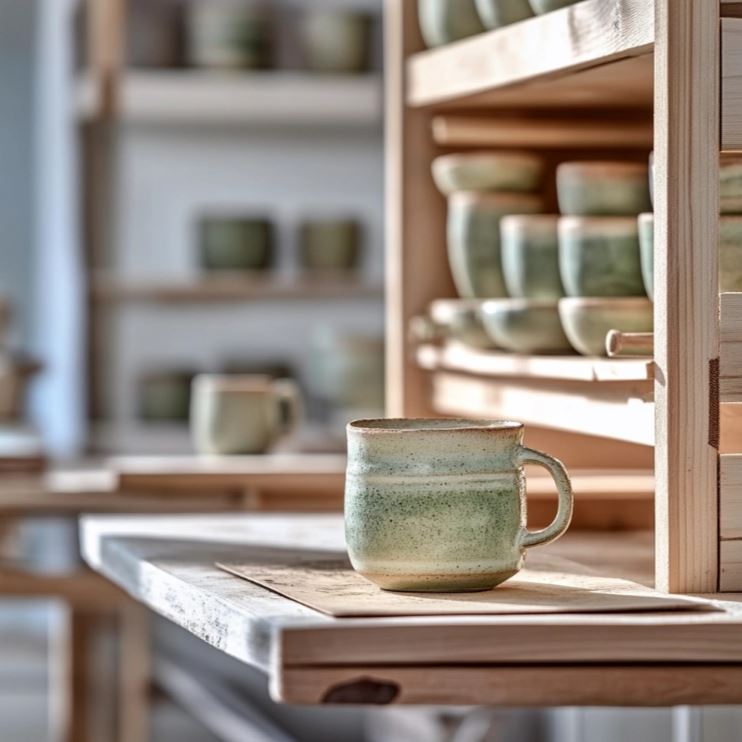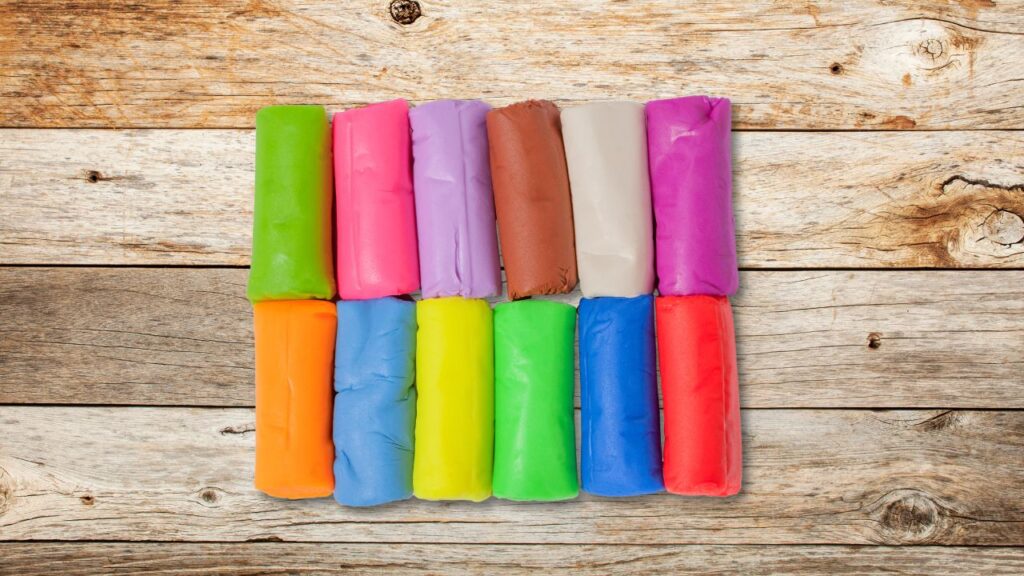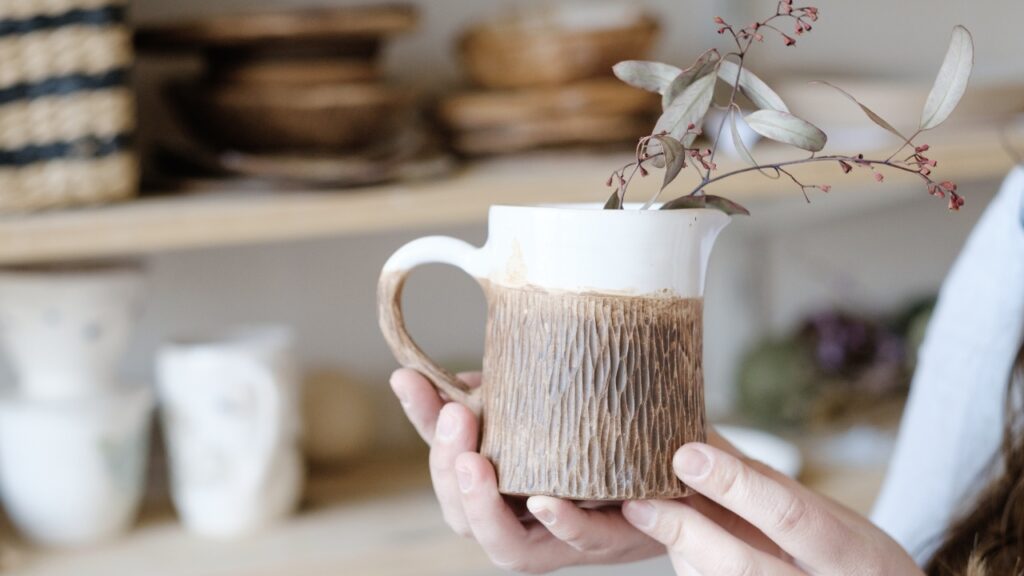Low Fire vs. High Fire Clay Differences
Here are the main differences between low fire vs. high fire clay. Clay comes in many types, and one difference is high fire vs. low fire clay. Each one has its own qualities, from how it looks to how strong it is after firing.
Choosing the right clay depends on your project and the finish you want.
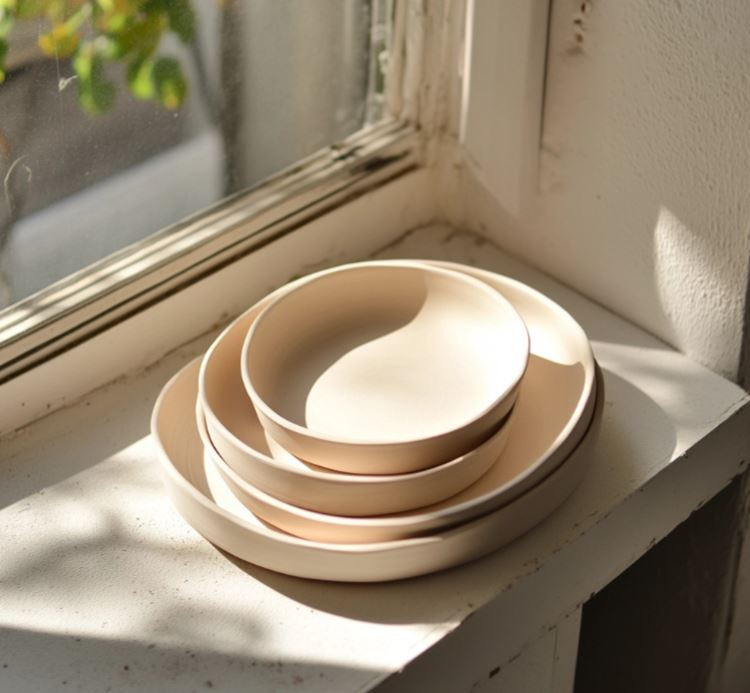
When you start working with clay, you might not realize how much the firing temperature matters. I took some pottery lessons years ago and I got to learn some really neat things about making my own pottery.
In this post, I’ll break down low fire vs. high fire clay so you can pick the best one for your work.
Low fire vs high fire clay
The main difference between low fire and high fire clay is the temperature at which they are fired. Low fire clay is fired at lower temperatures (around 1,820–2,100°F). This makes it more porous and often brighter in color, like earthenware.
High fire clay is fired at higher temperatures (about 2,200–2,400°F). This will give you a denser, more durable piece, like stoneware or porcelain. The firing temperature affects the clay’s strength, color, and finish. So it’s important to choose the right type for your project.
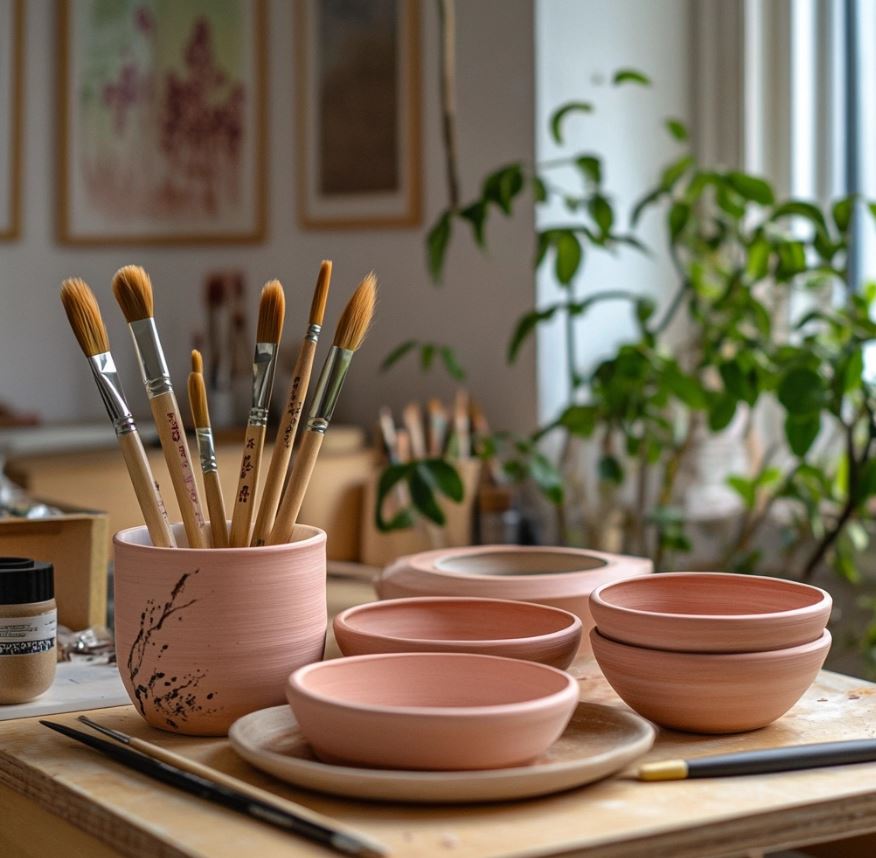
Differences Between Low Fire And High Fire Clay
1. Firing temperatures
The most significant difference lies in the firing temperature. High fire clay is fired at temperatures typically ranging from 2,200 to 2,400 degrees Fahrenheit (1,200 to 1,315 degrees Celsius). Low fire clay is fired at lower temperatures, usually around 1,800 to 2,100 degrees Fahrenheit (980 to 1,150 degrees Celsius).
2. Durability is different
High fire clay is more durable than low fire clay because it reaches a higher temperature. This makes it denser and less porous. Stoneware and porcelain, which are high fire clays, are strong enough for everyday use, like mugs and dinnerware.
Low fire clay, like earthenware, stays more porous and fragile unless it’s well-glazed. While both types can last a long time, high fire clay is better for items that need to handle heat, moisture, or heavy use.
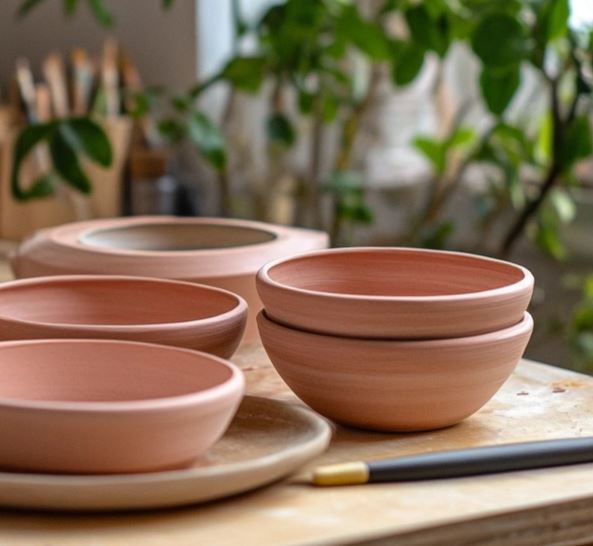
3. Color intensity
Low fire clay often results in brighter and more vibrant colors due to the lower firing temperature, while high fire clay tends to produce more muted and earthy tones.
4. Glaze compatibility
Glaze compatibility is important because not all glazes work with every type of clay. Low fire clay needs low fire glazes, which stay glossy and vibrant at lower temperatures.
High fire clay requires high fire glazes, which can create more natural, muted finishes due to the intense heat. If the glaze and clay don’t match, the glaze may not fully melt, could crack, or might run off the piece entirely.
Always check that your glaze is suited for your clay’s firing temperature to get the best results.
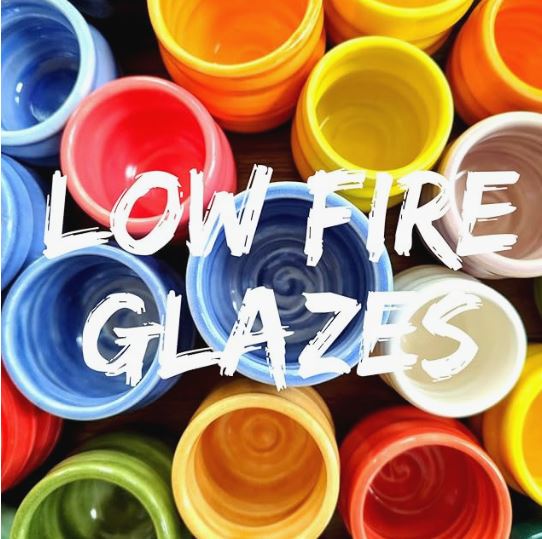
5. Surface texture
The surface texture of clay depends on its type and firing temperature.
Low fire clay, like earthenware, tends to have a more porous and rough texture unless heavily glazed. It often has a softer, more rustic feel.
High fire clay, such as stoneware and porcelain, becomes much denser and smoother after firing. Stoneware has a slight grit, while porcelain is almost glass-like.
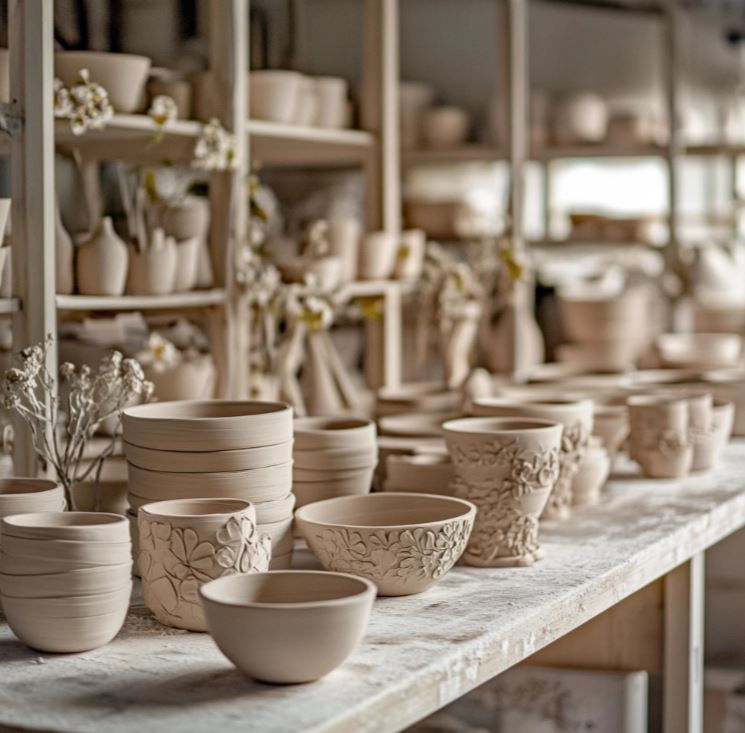
The firing process affects how the surface absorbs glazes, with high fire clay creating more durable, fused finishes and low fire clay allowing for brighter, more decorative glazes.
6. Absorption rate
The absorption rate of clay refers to how much water it can soak up after firing.
Low fire clay has a higher absorption rate because it stays more porous, making it less waterproof unless it’s well-glazed.
High fire clay becomes much denser, with a lower absorption rate, meaning it holds little to no water. This makes high fire clay, like stoneware and porcelain, better for functional pieces like mugs and plates. While low fire clay, like earthenware, is better for decorative items.
7. Shrinkage
Shrinkage happens as clay dries and fires, causing it to become smaller. Low fire clay shrinks less because it’s fired at lower temperatures, usually around 5-8%.
High fire clay shrinks more, often between 10-15%, since the intense heat makes it denser. The more water and finer particles in the clay, the more it shrinks. Understanding shrinkage is important for sizing projects correctly, especially for functional pieces like mugs or bowls.
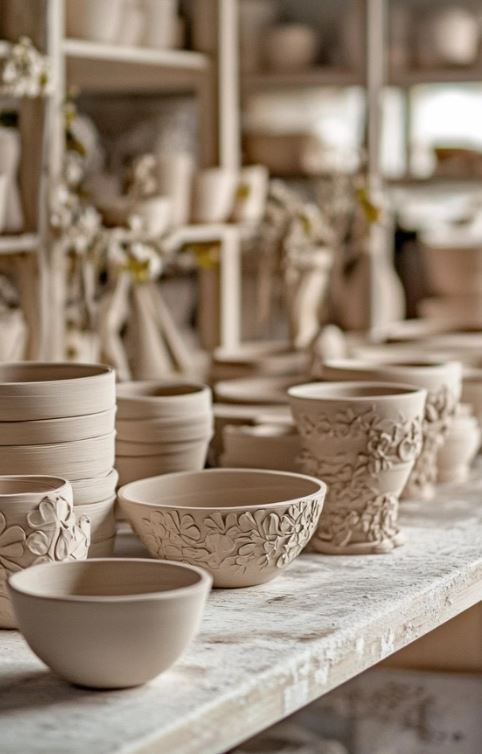
8. Kiln requirements
The kiln requirements for low fire and high fire clay are different due to their firing temperatures.
Low fire clay needs a kiln that can reach around 1,820–2,100°F (Cone 06–04), which most beginner kilns can handle. High fire clay requires much higher temperatures, around 2,200–2,400°F (Cone 5–10), meaning you need a kiln that can sustain extreme heat.
High fire kilns also use more energy and take longer to cool. Choosing the right kiln depends on the type of clay you’re working with and the final strength and finish you want.
9. What you can make
What you are going to make with low fire and high fire clay depend on their durability and absorption rate. Low fire clay, like earthenware, is great for decorative pieces, pottery with bright glazes, and items that don’t need to be super strong, like vases, sculptures, or wall art.
High fire clay, like stoneware and porcelain, is best for functional pieces that need durability, such as mugs, plates, bowls, and cookware.
Because high fire clay is denser and less porous, it’s good for things that will hold food, liquid, or withstand frequent use.
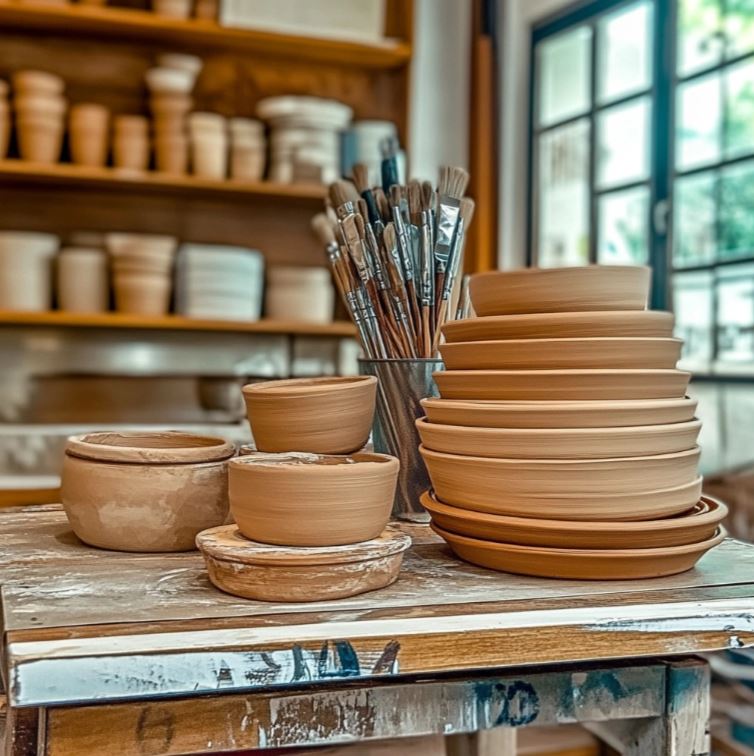
10. Firing time
High fire clay generally requires a longer firing time due to the higher temperatures involved. Low fire clay can be fired relatively quickly, resulting in faster turnaround times for projects.
This is great for ceramic and pottery shops on Etsy that sell handmade items that do not need a high temperature firing.
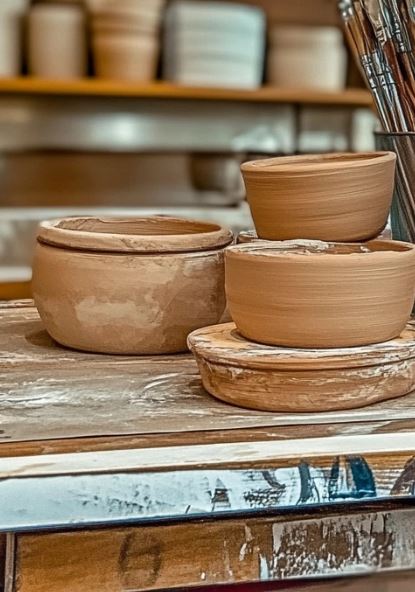
About Low Fire Clay
Low fire clay, also known as earthenware clay, is fired at relatively low temperatures ranging from around 1,000 to 1,200 degrees Celsius (1,800 to 2,200 degrees Fahrenheit). It is commonly used by beginners and artists who want a more forgiving clay body.
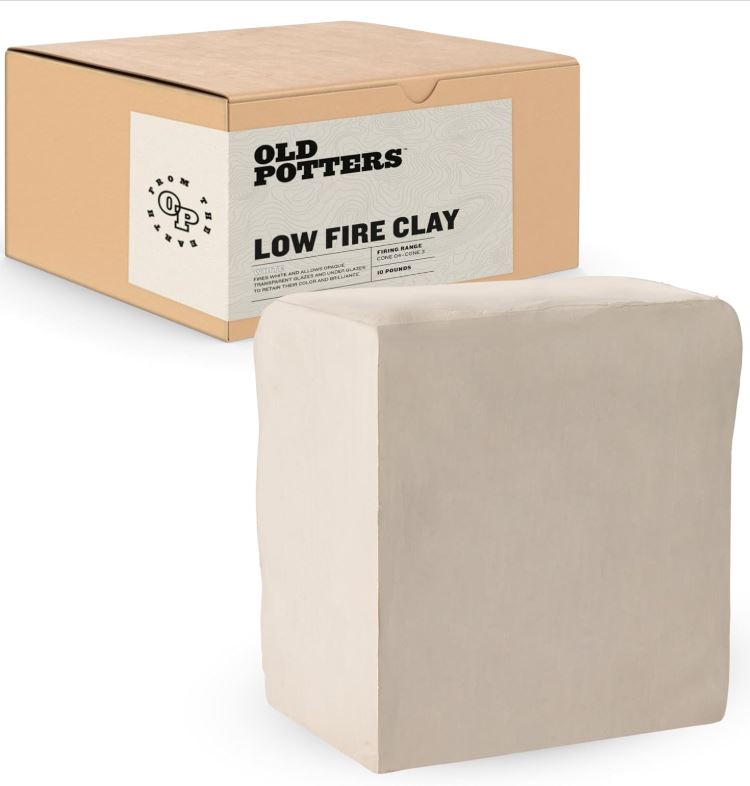
Here are some key characteristics of low fire clay:
Porosity: Low fire clay has a higher porosity compared to high fire clay, meaning it is more absorbent and can retain more moisture. This property allows for vibrant and varied glaze colors, as the glaze interacts with the porous surface of the clay.
Color and Texture: Low fire clay typically produces a wide range of colors, including warm earth tones. Its texture tends to be smoother and softer, making it easier to work with and shape.
Durability: While low fire clay is good for functional pieces, it is generally less durable compared to high fire clay. It is more prone to chipping, cracking, and water absorption, making it less suitable for items intended for heavy use or outdoor exposure.
Firing Equipment: Low fire clay can be fired using a variety of kilns, including electric kilns and even some home ovens, as the firing temperature is relatively low.
About High Fire Clay
High fire clay, often referred to as stoneware or porcelain clay, is fired at higher temperatures, typically ranging from 1,200 to 1,400 degrees Celsius (2,200 to 2,550 degrees Fahrenheit).
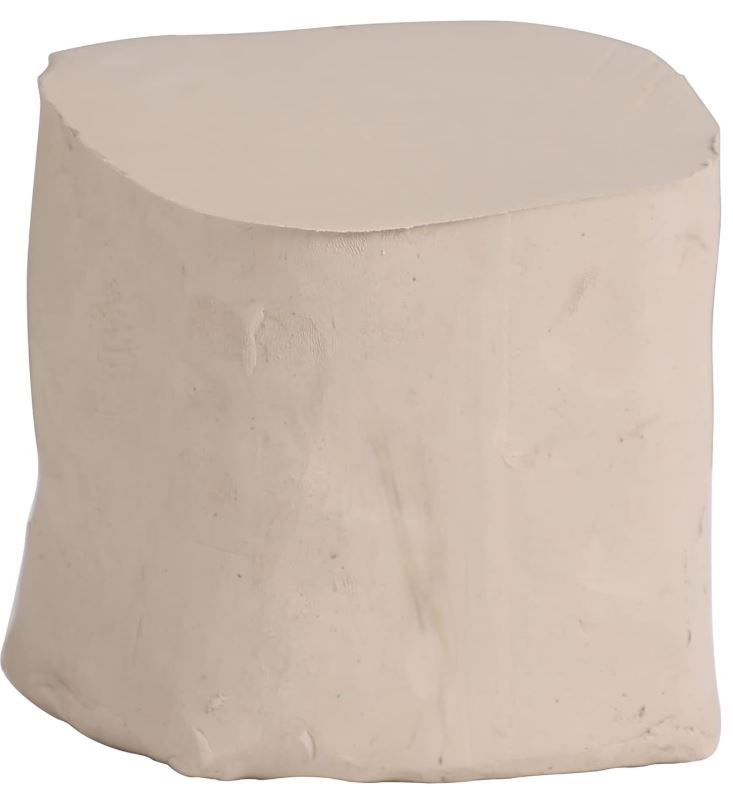
Here are the distinguishing characteristics of high fire clay:
Density and Strength: High fire clay is denser and more vitrified than low fire clay, resulting in greater strength and durability. It is goo to use for functional pottery, such as dinnerware or vases, as it can withstand the demands of everyday use.
Color and Surface: High fire clay tends to produce more muted and subtle colors, often in earthy tones. Its fired surface is usually smoother and has a slight sheen due to the vitrification process.
Translucency: Porcelain clay, a type of high fire clay, can achieve a remarkable translucency when fired to high temperatures. This delicate quality is highly sought after for creating delicate and light pottery pieces.
Firing Equipment: Firing high fire clay typically requires specialized kilns capable of reaching and sustaining the higher firing temperatures. Gas or wood-fired kilns are commonly used for stoneware and porcelain clay.
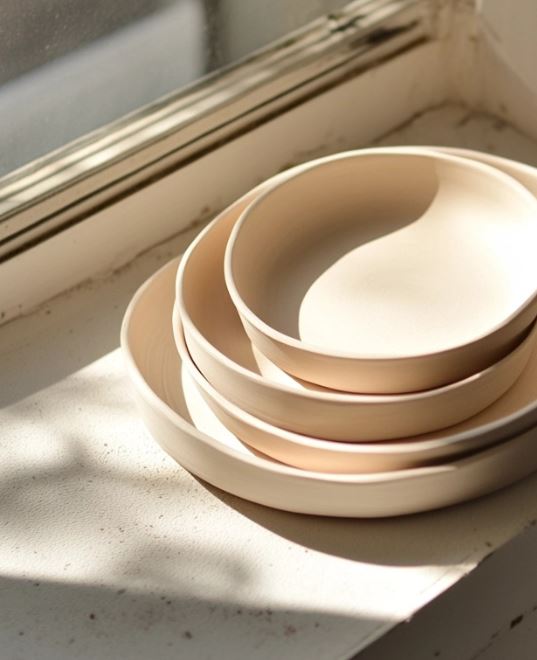
When choosing between low fire and high fire clay, think about the specific requirements of your project and then go from there. I hope this article helped you with low fire vs. high fire clay.
Both low fire and high fire clay have their own unique benefits, and the best choice depends on what you’re making.
If you love bright colors and decorative pieces, low fire clay is a great option. If you need something strong and durable, high fire clay is the way to go.
Which one do you prefer? Let me know in the comments!
More pottery articles

